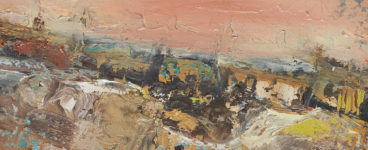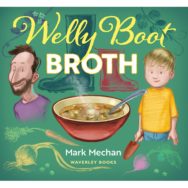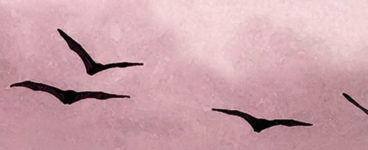‘Growing your own can teach food comes from, patience and nurture, the ability to think and plan long term, and the rewards of creating something from almost nothing.’
Mark Mechan’s Welly Boot Broth is a warm, charming picture book showing the fun and imagination in growing your own vegetables. We caught up with Mark to chat to him about his book.
Welly Boot Broth
By Mark Mechan
Published by Waverley Books
Congratulations on the publication of Welly Boot Broth – it’s such a lovely book. Can you tell us a little bit about it?
Thank you very much. It’s the story of a little boy, Elliot, whose Dad encourages him to ‘grow his own broth’ by planting vegetables in their garden. We follow Elliot as he ‘helps’ to dig, sow, weed … and fend off pests which are many fold in the garden. Elliot meanwhile indulges his love of digging deep holes, and letting his imagination run away with what he finds. The book is less ‘how to garden’ and more ‘give it a go and see what can happen or go wrong’. My publisher Waverley Books were as keen as I was to retain the flavour of Scottishness that had characterised my first book, Tumshie.
I used to come home from primary school for my lunch — often a bowl of tinned tomato, (which by the way is still the ultimate comfort food), with rolled up balls of doughy white bread dropped into it … bliss. But mum also made the most delicious home-made broths: chicken soup, lentil soup, vegetable broth. So I’m trying not to be judgemental (and god knows I still eat a lot of unhealthy stuff myself), but when you’re responsible for putting decent food in your own kids’ mouths, you start to weigh up other responsibilities. So, that first spread showing a frowning Dad opening a tin of tomato soup for Elliot hopefully will chime with parents who might find themselves in that tricky area between wanting to provide something wholesome for their kids, and finding literally anything at all that they will eat.
The book has a light touch theme about sustainable living and the wonder of growing your own veg. Do you think it’s important to teach kids as well as entertain them?
Oh yes, and of course the trick is – as you say – to do it with a light touch. Growing your own can teach food comes from, patience and nurture, the ability to think and plan long term, and the rewards of creating something from almost nothing. I feel that kids instinctively know if they’re being preached at and I want to try to avoid being too heavy handed. This story and Tumshie both come from personal experience, something my family and I have done, rather than an idea or a message that I wanted to mould a story around.
The other thing is that I just wanted to get across how much fun gardening can be. It’s a long game, waiting for your hard work at the start of the year to bear fruit (or veg) months later. For very small kids that’s not really engaging – it’s like waiting months for Christmas to finally arrive. But the enjoyment for wee ones is in the digging, getting dirty, finding worms, sowing seeds; then the daily caring for their wee plot — and the thrill of seeing the first sprouting shoots is really something exciting (well, I think so…). And eventually pulling a carrot from the ground, smelling it, tasting it – is even more exciting.
You have worked in publishing for a long time designing book jackets. What made you decide to enter the world of children’s picture books?
When our first two kids Charlie and Lily were really wee, I toyed with the idea of creating a book just for them. I insisted that we had a troll living under the floorboards of our house, and I thought it would be a fun project to create a story book around that. But young parents don’t really have that much time to burn, so I let that one slide. By the time our third, Elliot, was at school, our daily walk to his school gates would be chit-chat about what he would be dressing as for Halloween (which involved him coming up with outlandish ideas and me setting myself the challenge of whether they could feasibly be made out of corrugated cardboard). Between the two of us we cooked up the idea of a book, starring Elliot of course (and ‘Dad’, a younger version of me), about traditional Scottish Halloween — the centrepiece of which for me had always been the Turnip Lantern. I would complain to Elliot how no-one seemed to carve a tumshie any more, and that costumes were always bought rather than cobbled together at home. My bent for nostalgia sparked the book into life, although by the time I had pitched the idea to Waverley, created it, and Tumshie was finally published, Elliot was halfway through high school. So — a long gestation period. A bit like growing vegetables.
How do you approach illustration? What are you keen to get across visually?
What I try to do most is to create a depth of texture and colour that feels natural. It’s one of the reasons I use charcoal to draw with. The strokes are full of accidental richness that is hard to replicate in any other way. Meaning, I could have drawn it all digitally but that is just not so much fun. A charcoal sketch also tends to build up a little microclimate of smudges, fingerprints, rubbings out … ghosts of previous strokes that weren’t quite right. It brings the drawing a character that I really enjoy. Much of that texture isn’t always apparent in the final printed version, but the truth of the work is in its creation as much as its final appearance.
I’m pretty eclectic when it comes to design and illustration, but for my picture books I‘ve stuck to traditional drawings with charcoal on paper, which are scanned and then coloured digitally. I’ll draw the elements separately — people, backgrounds, objects — and combining them digitally to create the spread helps me retain a flexibility of composition that I wouldn’t otherwise have.
I’m from a generation that crossed the borderline between ‘traditional’ art techniques and the beginning of digital illustration. I was studying drawing and painting at Duncan of Jordanstone in Dundee when Photoshop was born, and moved into graphic design as a career when it was already becoming the industry standard for publishing houses using desktop publishing. So I’ll never lose my love of drawing on paper, the immediacy of it, and the physicality of it. Digital drawing and painting is incredibly fun, diverse and almost infinitely flexible, which I love too, so I’m happy to have a foot in both camps.
Thankfully, there are no wellies in the soup in the book! What’s your favourite soup to make and eat?
I love to make a proper borscht, which takes me two days — involving the roasting of beef bones for the bone broth. I like the earthniness of the beetroot, and the tang of the sour cream to finish it. But the soup that I’m most frequently asked to make is a mushroom soup, from a Rose Elliot recipe. It’s creamy, with a spike of paprika and a cheeky dash of sherry. I’ve never grown mushrooms though, so that soup didn’t make it into Welly Boot Broth.
Are you a keen gardener yourself?
Yes I love gardening, though I’m no expert. I remember my Grandpa popping pea pods for me in his allotment — Anderson shelter an’ all —and so I always raise peas in my garden now. They are so much fun to watch grow. I was very lucky to have inherited a garden with a vegetable plot from the woman who lived in my house before we bought it, about 20 years ago. (Mrs Kerr in Welly Boot Broth was named after her – my own private tribute). I spent this past summer digging a pond, landscaping and planting flowers which my wife Alison would constantly mail order for me. And I still have some veg in the ground to be pulled. Soup yet to be made!
What other illustrated books have caught your eye recently?
I can’t stop poring over mid-century children’s books that I find online. Graphically they amaze and inspire me. More recently though a book that I’ve picked up amongst the hundreds of stunning-looking books on show is the illustrated version of The House by the Lake by Thomas Harding. It’s illustrated by Britta Teckentraup. It’s such a beautiful book, and the layering of the house’s history is reflected in her gorgeous artwork.
Welly Boot Broth by Mark Mechan is published by Waverley Books, priced £7.99.
ALSO IN THIS ISSUE

 Joan Eardley: Land and Sea – Life in Catterline
Joan Eardley: Land and Sea – Life in Catterline
‘Many of her landscapes were painted less than thirty paces from her front door.’














